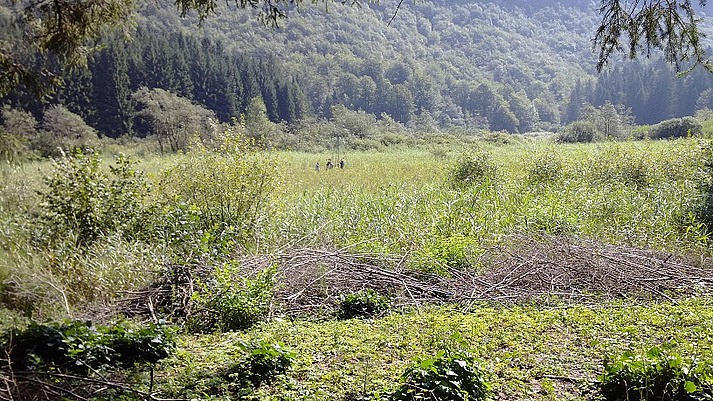Interdisciplinary Collaboration Provides New Impetus
Both focus areas benefit from cooperation with other scientific disciplines. At the same time, the project’s work is expected to act as a driving force for new collaborations and interdisciplinary cooperation. This includes closely connected historical organisations as well as scientific institutions.
Before starting the excavations, Airborne Laserscans and geophysical measurements laid the groundwork for the targeted research of both sites. Since, as regards to food supply, prehistoric and ancient agrarian societies respectively depend greatly on climate, archaeologically defined cultural changes in various epochs are often explained with short-term climate fluctuations.
Scientific Network LAHIS
Since 2022, the focus Late Antiquity has been involved in the research network LAHIS (Late Antique Hilltop Settlements). The network is an association of researchers from all over Europe who are working on Late Antique hilltop settlements. In addition to professional exchange at conferences, the network is compiling a database of known hilltop settlements and preparing a large exhibition on the topic.
Cooperation with Palynology, Archaeobotany and Archaeozoology
Addressing this subject, the Late Antiquity focus involves an intense collaboration with the palynology and archaeobotany group of Innsbruck University (Prof. Dr. K. Oeggl). Pollen profiles taken from bogs in the area help to reconstruct the settlement cluster’s vegetation history. What was cultivated, were there times of intensification or interruptions? Did the newly built hilltop settlement have an effect on the agrarian use of the valley?

The same research group examines carbonised fruits, grain and pulses of Monte San Martino. Two supply depots and a fireplace can be compared and provide insight into nutritional habits as well as the kind of supply storage practised by the inhabitants of the hilltop settlement.
Finds of animal bones provide information on slaughter methods and nutritional as well as storage customs of the ancient people. What was the role of hunting, how old were the animals slaughtered and did livestock change in size as a result of the drastic upheavals being researched? Monte San Martino also raises the question whether meat supply consisted exclusively of parts prepared and preserved in the valley.
Carbon-14-Dating Documents Time Period of Almost 1000 Years
Carbon-14 dating always becomes important when other more easily datable finds are missing, e.g. coins. Organic samples (charcoal, bones) are selectively taken from relevant finds and dated. At Monte San Martino this allows coverage of a period from mid-5th century to the last constructional activities in the Carolingian era. This way an external building could be dated from the high Middle Ages.
